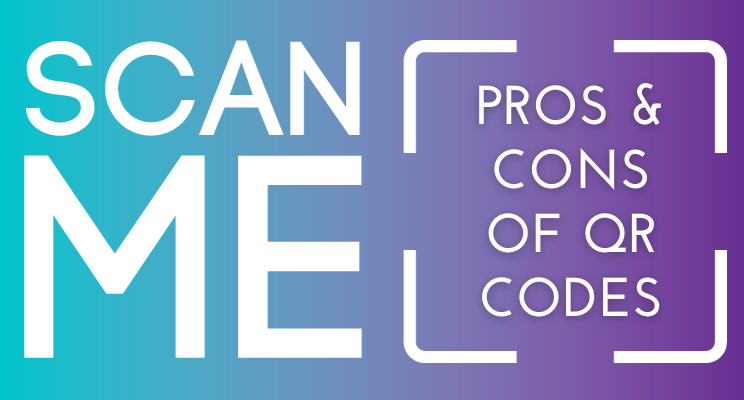They’ve been around since the 90s (seriously), but QR codes only made their way into the wider public consciousness in the pandemic days when we were all afraid to touch anything. (Remember bringing the mail in with salad tongs? I do.) And now it looks like these black and white designs resembling a zoomed out cryptic crossword are here to stay.
QR? I hardly know ‘er.
If you’re not sure what a QR code is, here’s a quick primer. The QR stands for “Quick Response”, and the pixelated design is actually a two-way (vertical and horizontal) barcode that can store things like a web address, payment details, or password verification. Why the two-way barcode? Well, these were first invented in Japan after the massive amounts of consumer goods being produced meant that the country was running out of regular barcodes.
Like anything (like Zoom backgrounds or FB Professional Mode), there are people who SWEAR by QR codes, and people who swear about them. Below are the pros and cons of QR codes (according to us, anyway.)
Pros of QR Codes
What do we love about QR codes? Glad you asked!
- They’re super convenient. OK, so not everyone loves loading up a QR menu on their phone when they’re at a fine dining restaurant. BUT for business cards or signage at events, they’re WAY easier for people to wrangle than a lengthy web address.
- Easily take payments! Card readers have come a long way, but a QR code that points to your Venmo, Paypal or Apple Pay is an ingeniously smart way for customers to easily make a payment or donation (bonus: you don’t have to handle grimy cash.) This also is in alignment with my core biz belief that you should make it EASY for people to give you money!
- Customizable and trackable. QR codes can hold a ton of information, so you don’t have to link only through to the main page of your website. You can use specific page links – including ones with tracking data or referral program IDs – without creating an eyesore on the page. If you want to share product pages, your shop location, or social media details, QR codes are a great option for swift action and analytics collection.
- They can be static or dynamic. You can point your QR code to a fixed address that won’t change over time OR you can update the link associated with the code over time – for example if you want to collect feedback on marketing campaigns. Just make sure you choose a dynamic code if you want to do the latter.
- Any smartphone can handle them. Anyone with something smarter than a potato phone will be able to handle QR codes, and you don’t need to be precise with how you point your camera – pretty much any angle will do.
Cons of QR Codes
Obviously QR codes aren’t perfect, or we wouldn’t still be typing in web addresses or scanning credit cards. Here are a few QR code cons:
- They require connectivity. QR codes are great if you’re in an area with wi-fi or solid 5G, but if you’re in a dead zone, people may struggle to click through to your site. Something to think about if you’re doing an in-person event in a massive hall or somewhere outdoors.
- A QR what now? While many of us have come across a QR code in our lives, they’re new tech to some people, and can be a hassle for those who aren’t super savvy with smartphones or web browsers or who have disabilities that make these a hassle to use. It’s a good idea to have a backup web link or payment option for these people.
- They’re not super secure. Anyone can access the information stored in a QR code. Be smart about what you link to – and make sure you don’t put any confidential info in whatever you’re linking to. Some people are also cautious about scanning QR codes because they don’t know where the link is going to take them.
- You can’t click ‘em if you’re on your phone. Okay, so this is a user error thing, not a real con, but use your noggin before you put a QR code up on your social media accounts. If people are browsing on their phones, they can’t snap that QR code using said phone. Keep your QR codes reserved for bridging the physical world with the digital one, k?
But how do I make one?
They look pretty techy, but whipping up a QR Code is actually super easy. Just head over to Canva, load up a design, click on “elements” in the left sidebar and type in “QR Code.” From there, just type in the web address you want to point to, and Canva will generate your own handy-dandy code!
What’s your take? Are you pro or anti QR code? Follow me on LinkedIn and message me with your thoughts!

